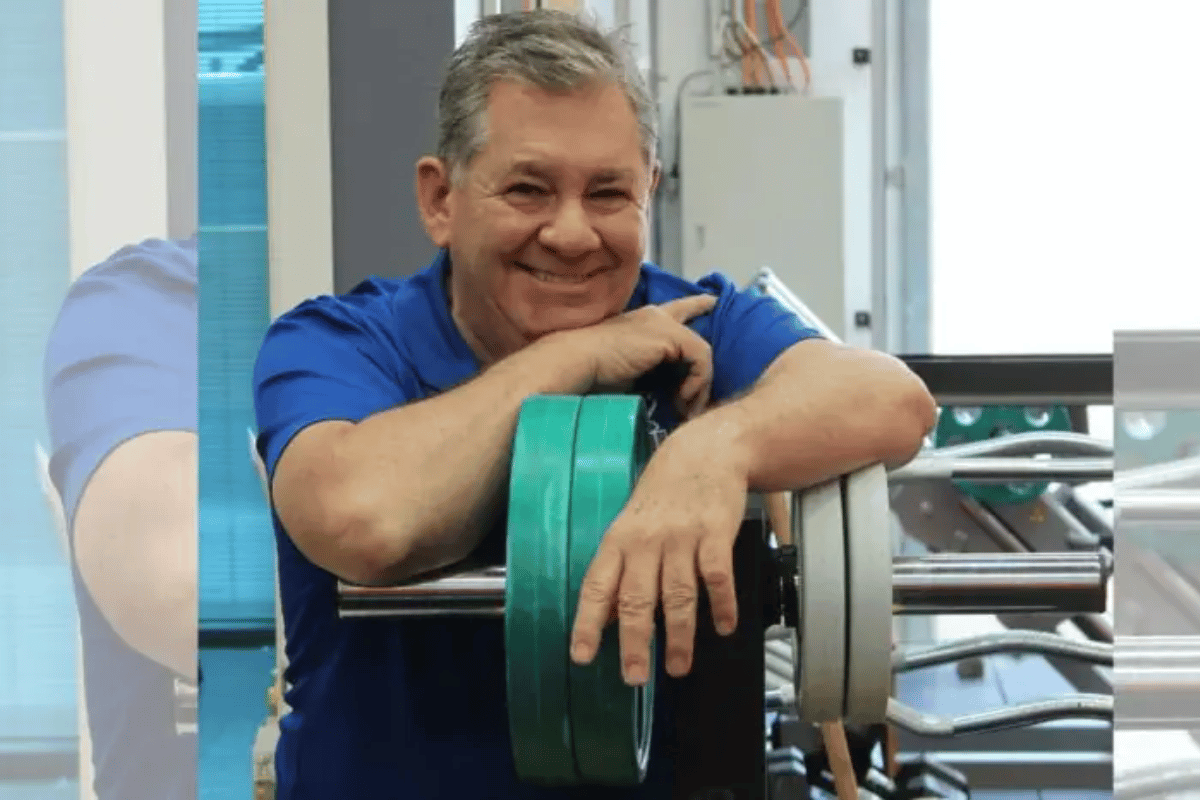Losing weight needn’t be impossible, but it can certainly be harder for men over 40 than it is for other age groups. The metabolism starts slowing down in your thirties, and especially when you’re over 40, it slows down even more, making it harder to maintain a healthy body. Men also tend to gain muscle, but fat is more likely to stick with them once it accumulates. As the available testosterone in your body decreases and your fat levels increase, weight loss is more difficult. Many men over 40 also have more sedentary lifestyles; for example, studies show that men spending long hours at a desk tend to gain more weight than men with more dynamic work schedules.
However the way we are to lose weight fast by exercising becomes more and more prominent under the backdrop. Exercise is not just beneficial but also essential for the effect and sustainability of weight loss in terms of health. For instance, exercise helps to increase the calorie burning, lower body fat, build muscles, boost metabolism and improve cardiorespiratory health – all helping you to lose weight faster and healthier than diet alone. Similarly, regular exercise coupled with healthy diet neutralise the risk of chronic diseases such as hypertension, cardiovascular diseases and cancer, and contribute to the improvement of mental health.
If you understand the unique obstacles men above age 40 face, and how to overcome them, you can create a targeted exercise programme that can quickly speed up weight loss, while increasing long-term health. In the next several sections, we will reveal five time-tested techniques that can help 40-and-up men lose weight fast with exercise.

Understanding the Role of Exercise in Fast Weight Loss
How to lose weight fast with exercise for men over 40? Exercising is one of the most important factors. Here we’re going to discuss about role of exercise in weight loss and why it should accompany with a healthy diet.
Boosting Metabolism and Burning Calories
Besides burning immediate calories, regular exercise also stimulates the metabolism, an important factor in weight loss. As men get older, their resting metabolism slows down. Exercise helps combat this natural decline in energy use by increasing muscle mass, which in turn increases resting metabolic rate – more muscle tissue burns more calories while at rest than more fat tissue does.
High-intensity workouts – which we’ll delve into further momentarily – encourage such an elevated voltage of activity that the metabolic rate continues to burn calories at an escalated pace for up to an hour after the workout has finished. That is the ‘afterburn effect’, or excess post-exercise oxygen consumption, known in the disarming jargon of scientists as EPOC.
Combining Exercise with a Healthy Diet
While exercise is important, you will not supplement a poor diet, so how to lose weight fast with exercise also depends on a healthy diet. You certainly shouldn’t be focused on a diet that includes a large amount of fatty and processed foods. Unless you are vegetarian, men over 40 should focus on a diet encompassing lean proteins, healthy fats, whole grains, and lots of fruits and vegetables. This combination gives the body the fuel it needs to gain strength through working out, but also gives it what it needs to recover.
A healthy diet is needed to provide energy for exercise, repair damaged muscles and build new ones. It also fosters caloric deficit, which is a necessity for weight loss. A balanced approach of exercise and proper diet does not just accelerate weight loss, it’s more healthy too.

5 Proven Techniques to Lose Weight Fast with Exercise
For men over forty years of age, there are several strategies that you could use to maximise the effectiveness and speed of your weight loss efforts. Here are six of those techniques that can help you lose weight rapidly.
1: High-Intensity Interval Training (HIIT)
HIITis this strong technique for weight loss in minimal time. HIITis a kind of exercise that is implemented in short intervals of intense excise with small rest periods or lower excise periods in between. They reason HIITspeedily burns more calories than all other forms of training, as well as increase metabolism rate after your hot workout.
Benefits of HIIT for Rapid Weight Loss:
Increased Caloric Burn: HIIT workouts are able to deliver a superior calorie burn in a shorter amount of training time over stead state cardio workouts.
Elevated Metabolic Rate: With the afterburn effect (EPOC), your calorie burn doesn’t quit once the workout does.
Cardiovascular Health: HIIT improves heart health and cardiovascular fitness.
Sample HIIT Routines for Beginners:
30-Second Sprints: Sprint for 30 seconds, then spend one minute walking or jogging. Do this cycle for 15-20 minutes.
Bodyweight Circuits: Complete 20 seconds of burpees, jumping jacks or mountain climbers with 10 seconds of rest between each one. Complete circuit three to four times.
2: Strength Training
Strength training is also essential for men over the age of 40 who want to lose fat, as it is the primary way to build and maintain muscle mass, which decreases with age. Strength training increases the metabolic rate and helps counteract the loss of muscle mass that occurs with age.
Building Muscle to Increase Metabolic Rate:
Muscle mass: more muscle means a bigger resting metabolic rate, meaning more calories burned all day long.
Functional Strength: Improves daily functional movements and reduces the risk of injury.
Key Strength Training Exercises for Men Over 40:
Compound Movements: These exercises (squats, deadlifts, bench presses, rows) work several muscle groups at the same time.
Progressive overload: Add a bit of extra weight (or more resistance) each week in order to keep challenging your muscles and stimulating growth.
3: Cardiovascular Workouts
It’s important to do cardiovascular exercises, because they help to burn calories and they contribute to heart fitness. They can assist people in losing wight and improving there overall health.
Importance of Cardio for Burning Calories:
Caloric Deficit: Cardio helps create the caloric deficit needed for weight loss.
Endurance and Stamina: Improves overall endurance and stamina, making other workouts more effective.
Effective Cardio Exercises:
Running: Excellent for burning calories quickly.
Cycling: Low-impact option that’s easy on the joints.
Swimming: Worth it every time. Full-body workout; low impact; high calorie burn.
4: Flexibility and Balance Training
Exercises that promote flexibility and balance are often not considered. But they are an essential part of exercise. Flexibility training helps for improved between-muscle mobility and muscle tissue recovery, and balance training can help an individual with their posture and body balance.
Enhancing Overall Fitness and Preventing Injuries:
Joint Health: Improves the range of motion and reduces the risk of injuries.
Muscle Recovery: Aids in muscle recovery and reduces soreness.
Yoga and Pilates Routines Suitable for Men Over 40:
Yoga: Downward dog, warrior poses and child’s pose improve flexibility and balance.
Pilates: Focuses on core strength, stability, and flexibility, ideal for improving overall fitness.
5: Consistency and Progress Tracking
Consistency leads to success. Once you start to work out regularly and track your workouts, you’ll feel motivated in the long run.
Developing a Regular Exercise Routine:
Schedule Your Workouts: Schedule workouts so that they are part of your daily routine.
Variety: Incorporate different types of exercises to keep workouts interesting and challenging.
Tips for Tracking Progress and Staying Motivated:
Keep a workout journal: Track your workouts as well as your weights, reps and general well-being?
Set Achievable Goals: Set short-term and long-term goals to keep yourself motivated and focused.
Then, in the next paragraph, you’ll offer an example of a balanced plan of diet and exercise that can help you lose weight purposefully.
Creating a Balanced Exercise and Diet Plan
To lose weight, it’s all about picking the best exercise for weight loss and coupling that with the ideal diet so that you can incorporate both into workout enjoyment. This allows your body to benefit from nutrients that help your workout, recover from it and lose weight with it.
Integrating Exercise with a Balanced Diet for Optimal Results
Balancing physical activity with a healthy diet allows you to get what you need from exercise: energy to do your activities, and recovery from those activities with the nutrients you need to repair and rebuild. Here is how to put the pieces together.
Timing Of Meals: Co-ordinate your meals with your exercise sessions to maximise energy and recovery. Try eating a carbohydrate-rich snack 30 minutes before exercise to provide energy, and one rich in protein after to aid recovery.
Caloric Intake: Make sure your calorie intake supports a caloric deficit. How do you do that? You eat less than the calories you burn during the day and through exercise. Just remember not to starve the muscle, or you could be inhibiting your metabolism.
MACRO NUTRIENT BALANCE: AIM FOR PROTEINS, GOOD FATS AND COMPLEX CARBOHYDRATES Lean proteins are imperative to support muscle repair and growth, while good fats provide sustainable energy. Carbohydrates serve as the energy source required for rigorous cardio or weight training regimens.
Nutritional Tips for Supporting Fast Weight Loss
Protein load: eat high protein to maintain and build muscle and include lean meats, fish, eggs, legumes and dairy.
Healthy fats: avocados, nuts, seeds, olive oil The mind also depends on the health of the body for energetic, clear thinking, so eating healthy fats (avocados, nuts, seeds, olive oil) is vital for hormone production and overall good health.
Whole Grains: Carbohydrates should always come from whole grains. White flour is highly processed and has a negative effect on blood sugar and digestion. Simply swapping over to wholegrain flour is enough. Fibre from fruit and vegetables allows the small intestine to carry its maximum load.Fibrous Chalk: Fibre deals with a minor digestive system problem. Fibre in vegetables, fruit and grains is used to keep the waste system and digestive system running smoothly. As in the case of the gut, fibre in the large intestine helps the excretory system get rid of cholesterol. The large intestine uses the same technique as the small intestine (caverns filled with fibre-like chalk) to absorb cholesterol and eliminate it.
HYDRATION: Drink the recommended daily dose of 8-10 glasses of water throughout the day in order to support all body functions and heighten the performance of your workout. Try to consume more water, up to 15 glasses of water, if you’re in a period of physical training.
Empty Calories: Sugar-sweetened beverages, fast food and highly processed snack foods have little nutritional value and can sabotage weight loss efforts.
Just combine these strategies with your exercise plan, and you’ll have a rock-solid regimen for quick, effective weight loss. In the section that follows, we will also tackle some common challenges that Weight Loss Warriors run into, and how to get over them so you can continue to drop the pounds.
Common Challenges and How to Overcome Them
When trying to lose weight fast with exercise, and you’re over age 40, there are certain obstacles that can get in your way and compromise your efforts. By learning about all of these things, you can ensure that you follow the correct path of resistance training for weight loss, and that will eventually lead to you achieving your weight loss goals by working through all of the obstacles the road appears to be littered with.
Addressing Potential Obstacles
Time Constraints:
The challenge is that we have very full work and family lives that don’t leave much time for it.
Solution: Work up a sweat doing high-intensity routines such as HIIT, sprinkled throughout the week, with each session lasting between 20 and 30 minutes. Make activity part of your daily routine – take the stairs instead of using an elevator, go for walks, and do quick workouts during breaks.
Physical Limitations:
Adversity: Some older individuals experienced muscle pain, decreased flexibility or prior joint injuries, which limited the type of exercise they could engage in.
Solution: If you’re not in a training or exercise markedly affects your functional independence, focus on low-impact measures such as swimming, cycling, or walking. Additionally, include flexibility and balance training for improved joint health and to reduce injury risk. Seek the help of your physician or a physical therapist to adjust workouts to your abilities.
Plateaus:
Challenge: Weight loss plateaus are common, where progress slows down or stalls entirely.
Remedy: 2. Vary your activity to stress your physique.Alter your diet to make sure you have a caloric deficit.3. And furthermore, consider new endeavours or up the intensity of your workouts.
Motivation:
Plus, it’s hard to stay committed to any goal that’s demanding, when the benefits are slow in coming.
Solution: Focus on smaller, more attainable objectives on a day-to-day basis and reward yourself with wins along the way. Recruit a workout partner or cozy up to a group at the gym for added accountability. Write it down and chart your courses.
Strategies for Maintaining Motivation and Consistency
Set Clear Goals:
Also set yourself both short- and long-term goals to maintain your focus. Break down your goals into parts so that they are specific, measurable, achievable, relevant and time-related (SMART).
Create a Routine:
Create a regular schedule to make it easier for exercise to stick.
Monitor Progress:
Keep track of your progress in a consistent way, such as by weighing in weekly, taking body measurements, and tracking your fitness levels. The practices of reading labels, comparison shopping, tracking fitness and eating behaviour, and checking in weigh-ins can all help you stay motivated.
Seek Professional Guidance:
Seeking advice and encouragement from a personal trainer or a nutritionist might be helpful. Design a programme that meets your needs.
Stay Positive:
If thoughts of being unable to lose weight enter your mind, acknowledge it and change the focus to things you’ll gain from being active, such as a boost of energy, a better mood, and an all-round healthier you. Staying focused on the positive is key.
Once those challenges are faced up to and the strategies above are put into action, men over 40 who want to lose weight will stay motivated and on track. The third and final part of our series on fast weight loss for men over 40 includes case studies and the exercise success stories of over-40 men who have successfully used exercise to burn fat and slim down.

Success Stories: Men Over 40 Who Lost Weight Fast with Exercise
You’ll also find the weight loss stories of others a huge source of inspiration, so here’s how to lose weight fast in real life by famous men over 40.
Success Story 1: John’s Transformation with HIIT
John, a 45-year-old executive, used his sedentary office job and packed schedule as an excuse for gaining more weight than he wanted. After reading about High-Intensity Interval Training (HIIT), John committed to doing it for 30 minutes four times a week. Within three months, John had lost 30 pounds. As he writes in Men’s Health magazine: HIIT is intense, a muscle-scorching sweat fest, yet it can trim your workout time to a fifth of traditional medicine. In contrast to its moderate counterpart, HIIT’s muscular demands help you drop weight twice as fast while building six times more muscle. John also incorporated the idea that diet concerns expenditure of energy ‘units’ and HIIT’s intensity allows fewer low-energy calories without sacrificing any muscle mass. Part of his weight-loss strategy also came from his relationship to ‘cost’. He cut the calories in his diet, and adopted an exercise plan of eating a strictly protein-based diet.
John’s advice: ‘Pick something or do something little and keep at it … A short minute or two pounding away, being intense with it, can make a difference if you can keep up with it, and you take in your fluids and foods and feed the machine at the same time.
Success Story 2: Michael’s Journey with Strength Training
Michael, now 52, was gaining weight and losing muscle, so, as one often does when encountering these problems, he started lifting weights. Michael focused on compound lifts that moved many body parts at once or worked together, such as squats, deadlifts, and bench presses. He then increased the weight he lifted after he was able to successfully do 10 repetitions at every weight level, and kept losing muscle and gaining weight. He also started eating a diet rich in proteins and good fats. Over the course of six months, he lost 25 lbs, gained five or six pounds of muscle, and became strong enough to keep his weight down. His increased metabolic rate also plays a role.
Michael’s Advice: ‘My life has been transformed by strength-training. It’s about strengthening the body, not weight-loss. Be patient, and consistent. You’ll get there.
Success Story 3: David’s Cardio and Diet Balance
Considering the extra weight, David’s cardiovascular workouts and balanced diet helped him shed the pounds. He started out by brisk walking and transitioned into running and cycling. David exercised five times a week and followed a diet that was free from refined sugars but rich in whole foods. In five months, he lost 40 pounds. His formula for success included consistent cardio and a wholesome-based diet.
Photo courtesy David Brick.David’s Advice: Find a form of exercise you like and do it. Then do some more. Pair a healthy form of exercise with healthy eating habits, and I promise you’ll enjoy the results.
Success Story 4: Peter’s Flexibility and Balance Training
Peter, 47, suffered from joint pain and stiffness for months, which made exercise difficult. After practicing yoga and Pilates for four months for flexibility and balance, he dropped 20lbs and his joint pain dissipated. He’s now much more graceful, and he’s added strength and cardiovascular workouts as well.
But there, suddenly, was Peter’s advice: ‘Do not neglect balance and flexibility training. Flexibility and balance condition your body for more challenging workouts. You will prevent injuries. You should continue and in the end you will win in weight loss and your overall health.’
Success Story 5: Tom’s Consistency and Progress Tracking
‘My biggest challenge was to be consistent and stay on track here. Every time I lose focus I gain weight, so I try to keep it up.’ Tom, 50, kept it up by doing HIIT, strength-training and cardio with the help of a workout journal. His weight loss total over six months was 35lbs: ‘Being consistent is important, and keeping track of your progress is key. I set small goals, such as losing two kilos per month, so I have something to work toward.’
‘Consistency is everything. Track your workouts so you can celebrate every moment and the small wins. Stay faithful and the rest will come.’ What is Tom’s advice?
As you can see from these stories, men over 40 can lose a lot of weight very quickly by including exercise as a part of their lifestyle. If you find a routine that works for you and stick to it, there’s no reason why you won’t achieve success. In the final section, we’ll answer some frequently asked questions about fast weight loss with exercise to help you on your way.
FAQ Section: Addressing Common Questions About Fast Weight Loss with Exercise
To help clarify these issues and keep you on the fast weight-loss path, here are the answers to some of the most commonly asked questions men 40-plus have about slimming down with exercise.
Q1: How soon can I expect to see results from these exercises?
Response: Your timeframe will vary for the feeling of seeing results and the actual times you physically look different. Factors include your beginning weight, starting fitness level, as well as how well you stick to both the exercise and diet plan. You should notice slight changes in energy and fitness within the first few weeks. With a smart diet and exercise routine, you will notice large weight loss within 4-6 weeks. Be patient my friends, good things takes time!
Q2: What if I have existing health conditions or injuries?
Answer: if you already have health conditions or injuries, you need to talk to your physician before you start exercising, so that they can advise you on planning your workouts or suggest exercises that may be suitable for your specific requirements and injuries, With low-impact exercises such as swimming and cycling, or exercises that focus on flexibility, you can also engage in physical activity even if you have joint problems.
Q3: How often should I exercise each week to lose weight fast?
What is the correct answer? Keep on moving at least four or five times a week, ideally combining some high-intensity interval training (HIIT), strength training and cardiovascular workouts practices with some flexibility training to round out a balanced routine. When viewed in its proper context – ie, something you can live with, right alongside your work and personal life – consistency is way more important to achieving results than cramming high-intensity interval training into sporadic one-hour sessions. There is mounting research confirming the effectiveness of shorter bout lengths and more frequent exercise sessions.
Q4: Can I combine these techniques with other weight loss methods?
Correct answer: Yes.It is best to combine different techniques for weight loss in order to obtain some results.Now, add variety to your weight loss regime by infusing your routine with exercises, balanced diet, proper sleep, stress management, balancing hydration needs, considering any medical histories, also considering needs of family members, working out a feasible regime (like creating a weekly schedule for exercising and determining number of calories to be consumed).Consulting a nutritionist or a fitness trainer can also be a good idea.
Q5: What are some signs that my exercise routine needs adjustment?
What’s the answer? Regularly check if you’re making any progress and, if not, change your daily habits. You know it’s time to change when.
Plateauing: If you’ve continued at the same pace but find that you’re no longer getting much better, you might need to change up your program (or make it harder).
Chronic fatigue: Chronic fatigue or lack of energy could indicate being overtrained or recovery issues.
And boredom: As soon as it seems like you’re going through the motions, add some variation.
With these common questions in mind, and with some educated modifications, you can pack more fat-burning punch into every exercise session, and success and weight loss will follow.
Related Posts :
- Experience The Bliss Of Weight Loss With Bliss Weight Loss Gummies A Natural And Effective Solution 1ewt
- En Unveiling The Shark Tank Fat Burner Yu5n
- How Turbotrimacv Gummies Are Accelerating Weight Loss A Comprehensive Review 0k0u
- En Slim Candy Keto Gummies Can These Gummies Help With Weight Management On A Ketogenic Diet N1jx
- Kelly Clarkson ACV Gummies Unlocking The Power Of Apple Cider Vinegar For Optimal Health And Weight 5of1

